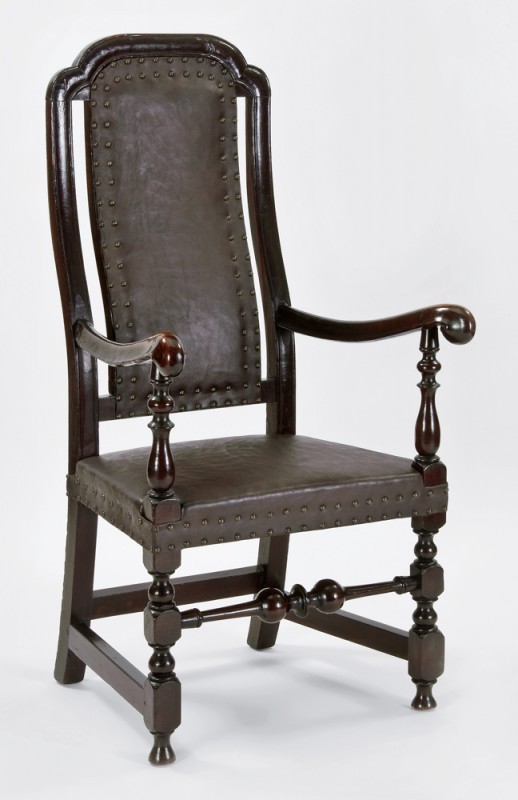
Armchair, probably Boston, Massachusetts, 1723–1735. Maple. H. 46", W. 23", D. 16 1/2". (Courtesy, Winterthur Museum.)

Armchair, probably Philadelphia, Pennsylvania, 1725–1735. Maple. H. 49", W. 23", D. 17 1/4". (Courtesy, Winterthur Museum.)
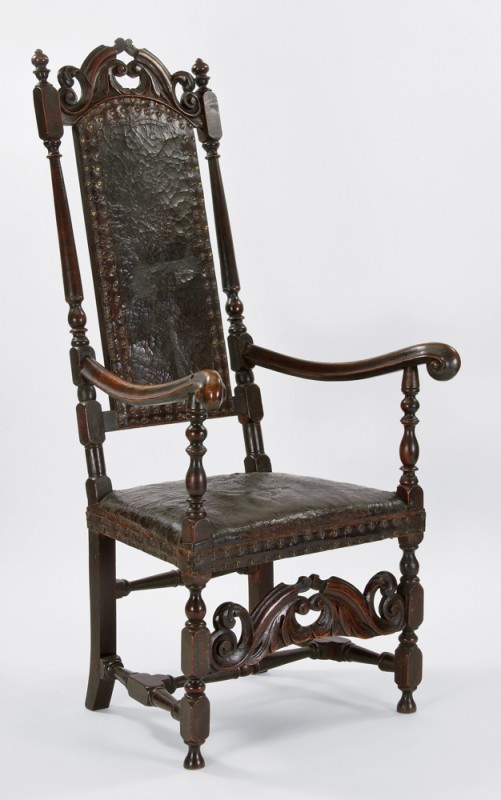
Armchair, Boston, Massachusetts, 1695–1710. Maple and red oak. H. 53 1/4", W. 22 7/8", D. 17". (Courtesy, Winterthur Museum.) This chair has its original Russia leather upholstery.

Plate 11 from William Macpherson Hornor, Blue Book: Philadelphia Furniture (1935).
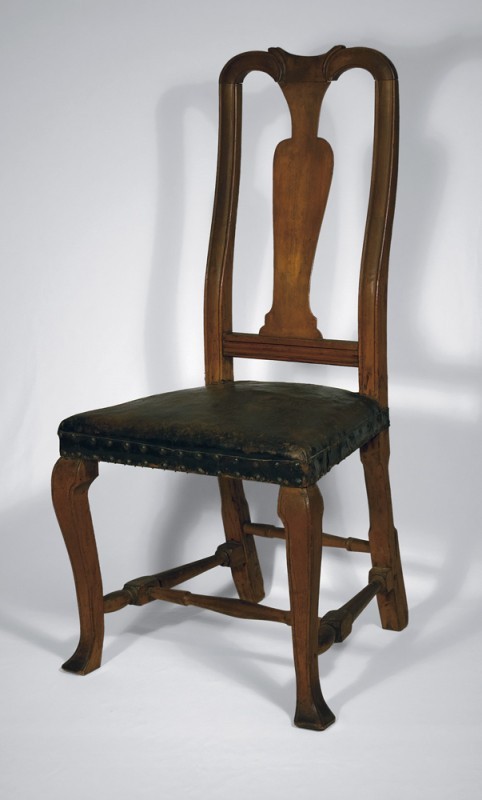
Side chair, Boston area, Massachusetts, 1728–1740. Maple. H. 41 1/2", W. 20 1/2", D. 19 1/2". (Private collection; photo, Philip Zimmerman.) This chair has its original leather upholstery.
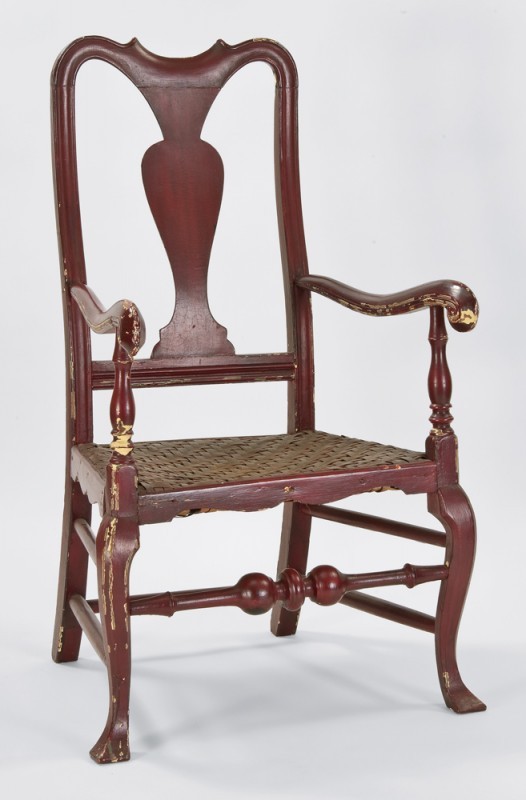
Armchair, Philadelphia, Pennsylvania, 1730–1745. Maple with ash. H. 41 3/4", W. 25 1/2", D. 23 1/4". (Courtesy, Winterthur Museum.) The splint seat represented a modest savings in cost over leather.

Armchair, Boston area, Massachusetts, 1728–1740. Birch and cherry. H. 40 3/4", W. 22 7/8", D. 20 7/8". (Courtesy, Historic Odessa.)
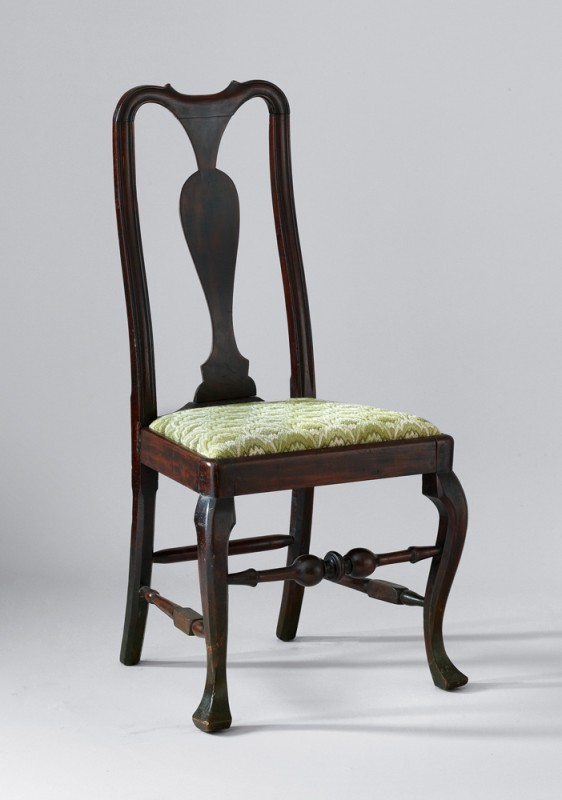
Side chair, Philadelphia, Pennsylvania, 1730–1740. Maple. H. 41 1/2", W. 21 1/4", D. 19". (Private collection; photo, Joe Kindig Antiques.)
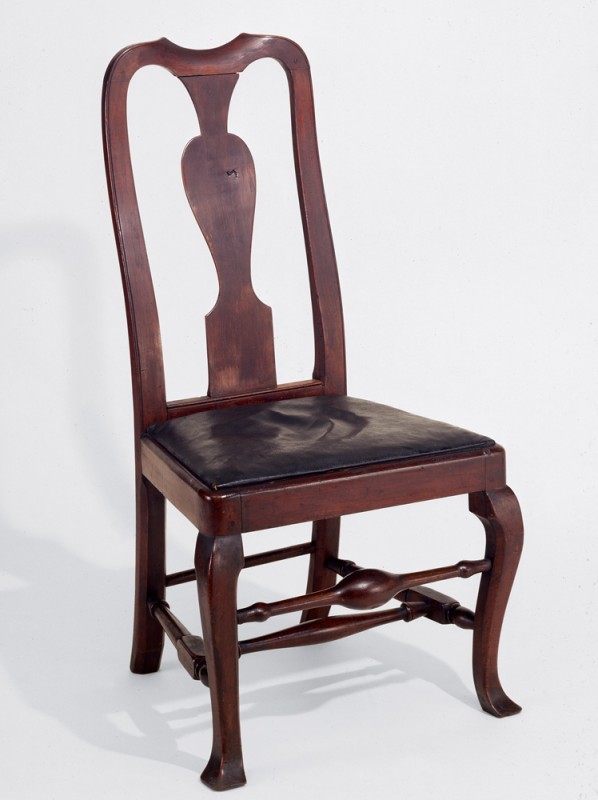
Side chair (one of a pair), Philadelphia, Pennsylvania, 1730–1740. Maple with pine (seat). H. 40 3/4", W. 21", D. 19". (Courtesy, Wright’s Ferry Mansion.) The side and medial stretchers are similar to those on Boston chairs, but the plain rear stretcher on this chair and the example illustrated in fig. 8 is a Philadelphia convention.
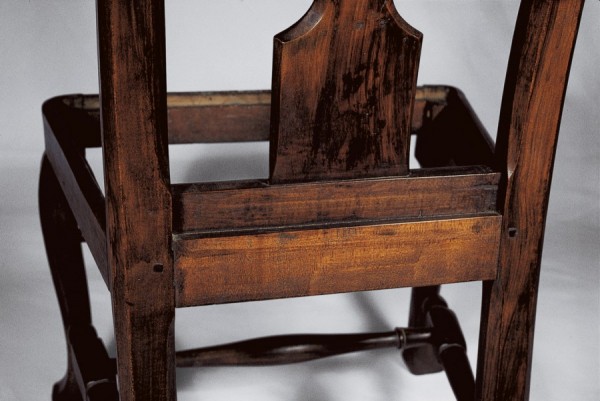
Detail of the rear stay rail and seat rail of the side chair illustrated in fig. 9.
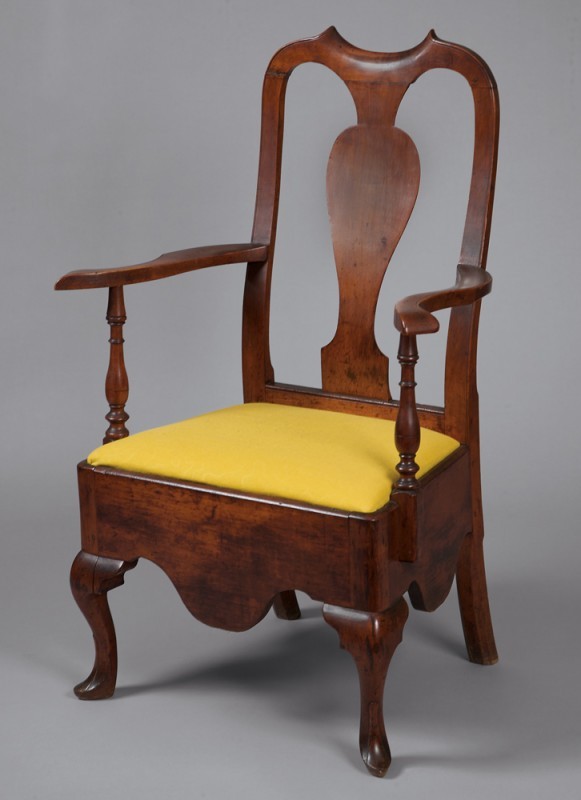
Armchair, Philadelphia, Pennsylvania, 1735–1745. Cherry with white cedar. H. 42", W. 28", D. 20 1/2". (Courtesy, National Society of the Colonial Dames of America in the Commonwealth of Pennsylvania at Stenton.)
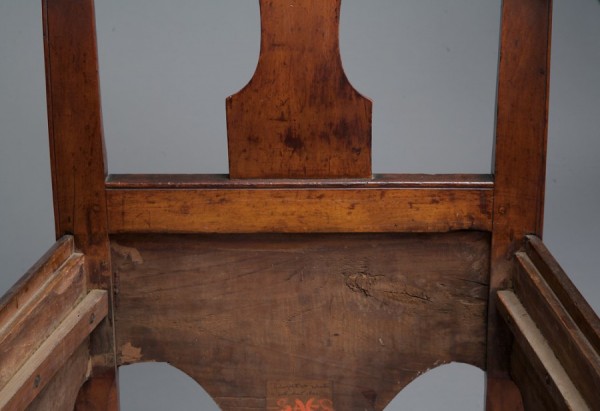
Detail of the rear stay rail and seat rail of the armchair illustrated in fig. 11.
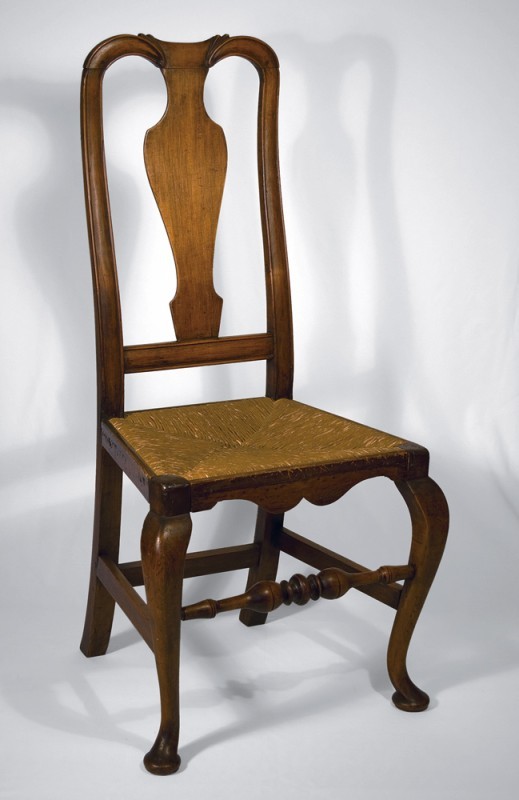
Side chair, Philadelphia, Pennsylvania, 1730-1745. Maple. H. 42", W. 20 1/2", D. 19 1/2". (Private collection; photo, Philip Zimmerman.)

Detail of the crest rail of the side chair illustrated in fig. 13.
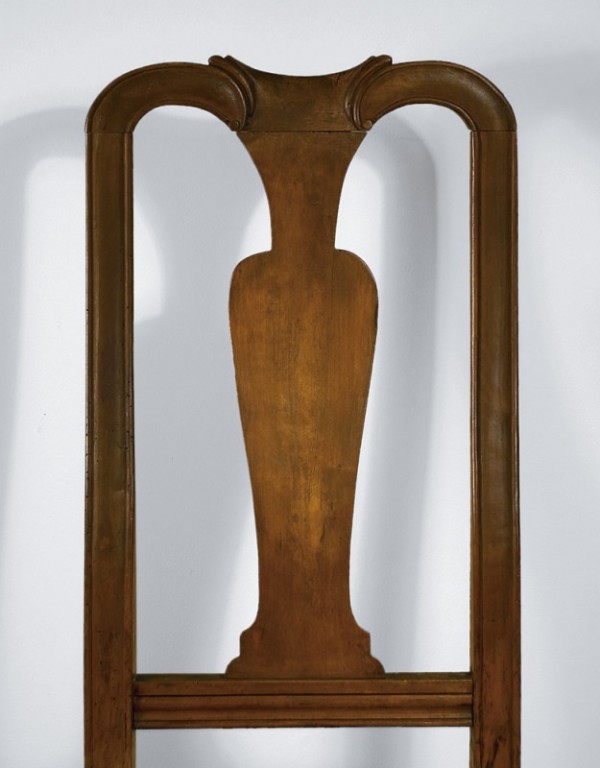
Detail of the splat and crest of the side chair illustrated in fig. 5.
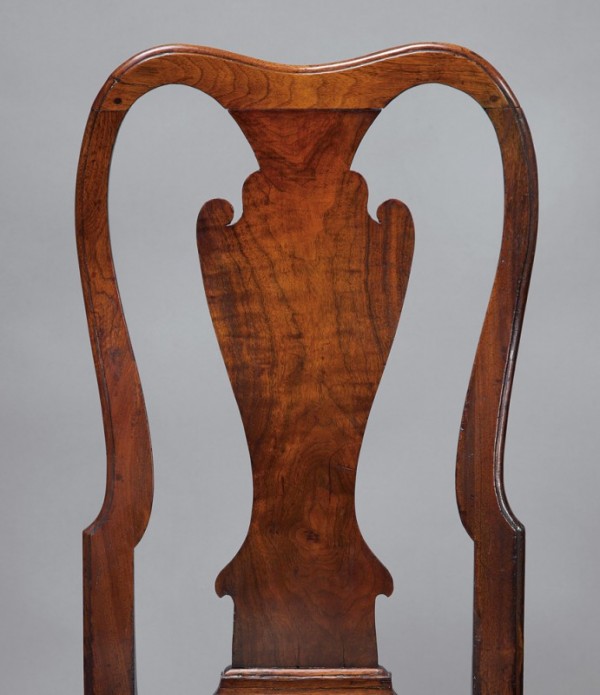
Detail of the splat and crest of a side chair, Philadelphia, Pennsylvania, 1730–1740. Walnut, walnut veneer. H. 40 5/8", W. 20 3/4", D. 20 1/2". (Courtesy, National Society of the Colonial Dames of America in the Commonwealth of Pennsylvania at Stenton.) This chair was likely owned by James Logan of Stenton.

Detail of the splat and crest of the side chair illustrated in fig. 8.
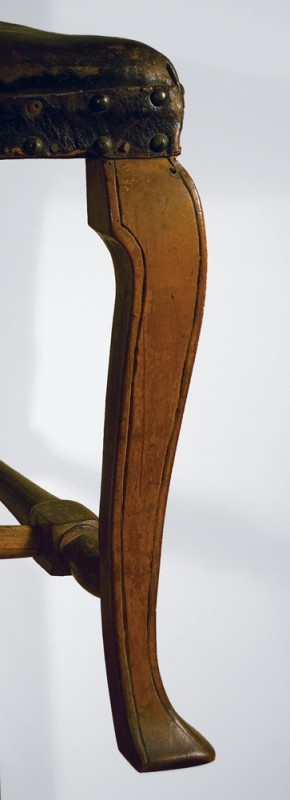
Detail of the right front leg of the chair illustrated in fig. 5.
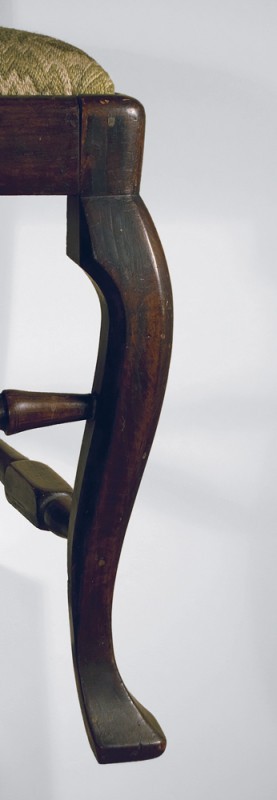
Detail of the right front leg of the chair illustrated in fig. 8.
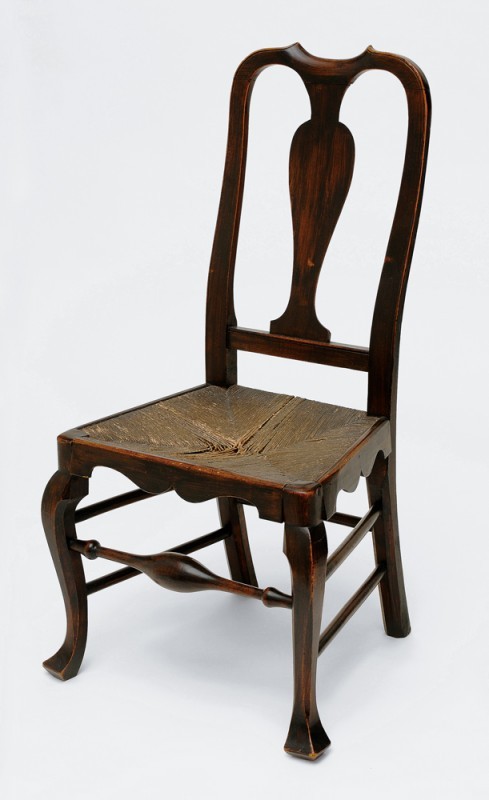
Side chair labeled by William Savery, Philadelphia, Pennsylvania, ca. 1750. Maple. H. 41", W. 19 1/2", D. 15". (Courtesy, State Museum of Pennsylvania, Pennsylvania Historical and Museum Commission.)
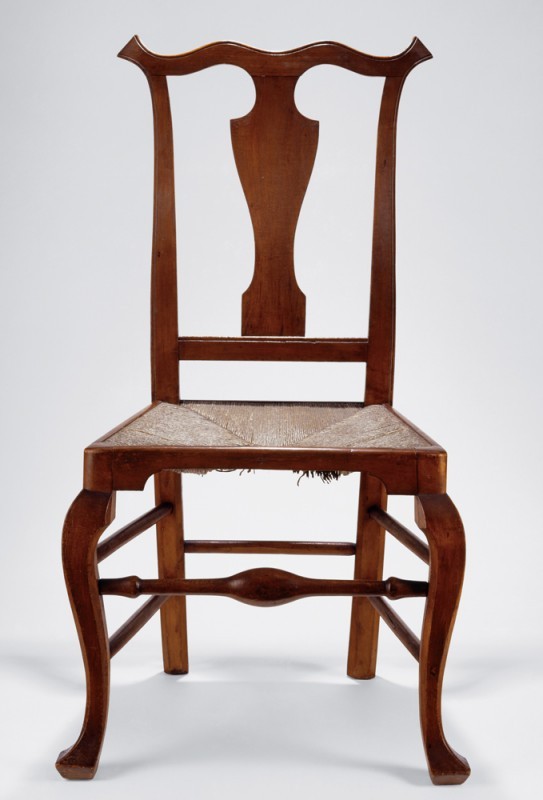
Side chair labeled by William Savery, Philadelphia, Pennsylvania, ca. 1750.
Maple. H. 36", W. 19 1/2", D. 15 1/2". (Courtesy, Dietrich American Foundation.)
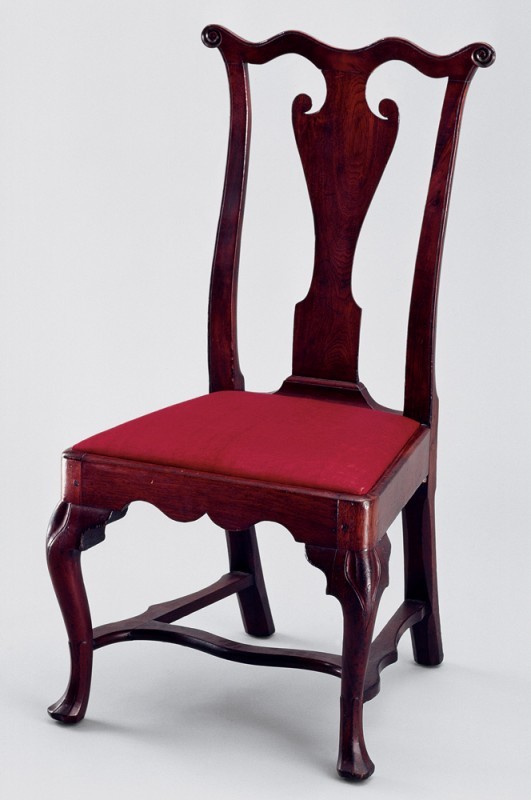
Side chair labeled by William Savery, Philadelphia, Pennsylvania, 1750–1760. Walnut with yellow pine (seat). H. 39", W. 21", D. 20 1/4". (Courtesy, Colonial Williamsburg.) This chair is one of a pair.
